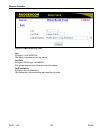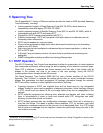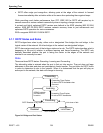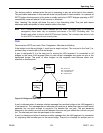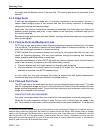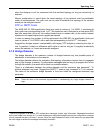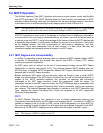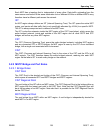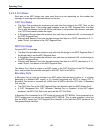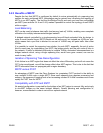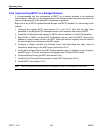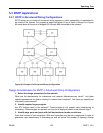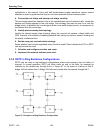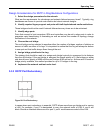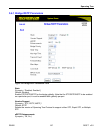
Spanning Tree
ROS™ v3.5 140 RS400
5.2.2.2 Port Roles:
Each port on an MST bridge may have more than one role depending on the number and
topology of spanning tree instances defined on the port.
CIST Port Roles
• The Root Port provides the minimum cost path from the bridge to the CIST Root via the
CIST Regional Root. If the bridge itself happens to be the CIST Regional Root, the Root
Port is also the Master Port for all MSTIs (see below), and provides the minimum cost path
to a CIST Root located outside the region.
• A Designated Port provides the minimum cost path from an attached LAN, via the bridge to
the CIST Regional Root.
• Alternate and Backup Ports have the same sense that they do in RSTP, described in 5.1.1,
under “Roles”, but relative to the CIST Regional Root.
MSTI Port Roles
For each MSTI on a bridge:
• The Root Port provides the minimum cost path from the bridge to the MSTI Regional Root, if
the bridge itself is not the MSTI Regional Root.
• A Designated Port provides the minimum cost path from an attached LAN, via the bridge to
the MSTI Regional Root.
• Alternate and Backup Ports have the same sense that they do in RSTP, described in 5.1.1,
under “Roles”, but relative to the MSTI Regional Root.
The Master Port, which is unique in an MST region, is the CIST Root Port of the CIST Regional
Root, and provides the minimum cost path to the CIST Root for all MSTIs.
Boundary Ports
A Boundary Port is a port on a bridge in an MST region that connects to either of: 1) a bridge
belonging to a different MST region, or 2) a bridge supporting only RSTP or legacy STP. A
Boundary Port blocks or forwards all VLANs from all MSTIs and the CIST alike. A Boundary
Port may be:
• The CIST Root Port of the CIST Regional Root (and therefore also the MSTI Master Port),
• A CIST Designated Port, CIST Alternate / Backup Port, or Disabled. At the MST region
boundary, the MSTI Port Role is the same as the CIST Port Role.
A Boundary Port connected to an STP bridge will send only STP BPDUs. One connected to an
RSTP bridge need not refrain from sending MSTP BPDUs. This is made possible by the fact
that the MSTP carries the CIST Regional Root Identifier in the field that RSTP parses as the
Designated Bridge Identifier.



